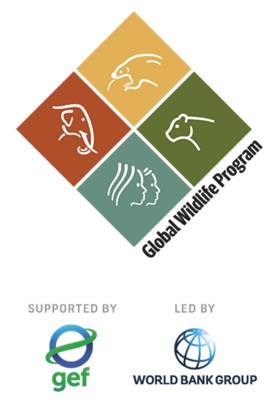
The Global Wildlife Program hosted its annual conference in Panama City, Panama from January 20-24, 2025.
With over 100 participants, including government focal points from 30 of the GWP’s 38 participating countries, the conference highlighted best practices an d facilitated knowledge exchange among project teams, government representatives, and partners. Attendees also collaborated on the Program’s first initiative to co-design future knowledge activities.
- OVERVIEW
- DAILY SUMMARY
- AGENDA
- RELATED
Kicking off with a welcome from Panama’s Minister of Environment, His Excellency Juan Carlos Navarro, the conference unfolded over five days and included a field trip to the Soberanía National Park, Panama Nature Centre wildlife rehabilitation center, and the Miraflores Panama Canal Visitor Center.
With sessions on transboundary collaboration, behavior change, and communications; a good practice showcase and knowledge co-lab; expert clinics, and more, attendees gained valuable insights into the latest innovations and approaches to wildlife conservation. Collaborative sessions also gave participants a platform to develop future knowledge events that reflect the group’s most timely and pressing needs.
As the only in-person event for the entire GWP each year, connections forged at the annual conference help catalyze knowledge sharing across the Program and contribute to the long-term success of the GWP’s mission to advance global wildlife conservation efforts, promote human-wildlife coexistence and foster wildlife-based economies.




Day 1 opened with welcome remarks from the World Bank’s country manager for Panama, Joelle Dehasse; Hannah Fairbank from the GEF Secretariat; Panama’s Minister of the Environment, His Excellency Juan Carlos Navarro; and a keynote on jaguar conservation by GWP Panama’s Ricardo Moreno.
A panel discussion on transboundary collaboration raised challenges and opportunities for wildlife conservation across borders using examples of marine turtles in the Philippines, the transfrontier conservation areas of Zambia, and binational management of La Amistad International Park in Panama and Costa Rica. This was followed by the Good Practice Showcase, where colleagues gave lightning-style presentations on practical solutions to wildlife conservation challenges. The Africa group heard presentations about successful stakeholder engagement, mitigation measures to protect water infrastructure from damage by wildlife, capacity building to reduce illegal wildlife trade, and combatting bushfires to preserve biodiversity. The Asia/LAC group heard presentations focused on community and cross-sector partnerships to address issues like negative community attitudes toward wildlife and developing wildlife-based livelihoods, benefits from the successful implementation of integrated landscape management, and ways to overcome project delays.
On day 2, groups participated in the Knowledge Co-Lab. This exercise was an interactive session where, for the first time, participants developed proposals for future knowledge activities that will benefit the GWP community . Suggestions included establishing an M&E working group, developing guidance on best practices for community engagement, a wildlife law enforcement online resource for judges and prosecutors, strategies for private sector engagement, a peer exchange for integrated land management, and capacity building for human-wildlife conflict and coexistence.
Next, GEF-8 projects from Mexico, Kenya and the Philippines shared how, with support from TRAFFIC, they are integrating behavior change strategies into their project designs. Their insights showed how long-term conservation goals can be supported by creating a collective shift in societal norms toward wildlife protection and communities taking ownership of conservation efforts.
Day 3 was a hands-on learning experience with guided hikes in Soberanía National Park; a visit to the Panama Nature Center, focusing on wildlife rescue and conservation efforts; and the Panama Canal.
Day 4 began with parallel sessions allowing for focused discussions between GEF-6 and GEF-7 projects on ways to replicate, institutionalize and scale up lessons learned. GEF-8 projects met to discuss next steps in their formation.
Participants then chose one of three expert-led, in-depth sessions on innovative financial mechanisms, professionalizing ranger workforces, and anti-money laundering. The day closed with multiple interactive roundtables. This was a platform for participants to connect with conservation and development organizations to learn about their latest knowledge, tools, and opportunities for collaboration. Eleven partners hosted roundtables, covering topics from nature-based tourism, monitoring big cats via real-time satellite data, ecosystem restoration, and collaborative management partnerships, to creating campaigns that inform the public on conservation messaging.
On day 5, the attendees heard examples from three projects about communication and storytelling. The emphasis was on effectively sharing information with communities and stakeholders and learning different ways to approach implementing an effective plan based on strategy, risks, resources and timeline.
The conference closed with an exercise discussing potential national priorities for programming under GEF-9.
Date: January 20 - 24, 2025 ET
Location: Panama City, Panama

